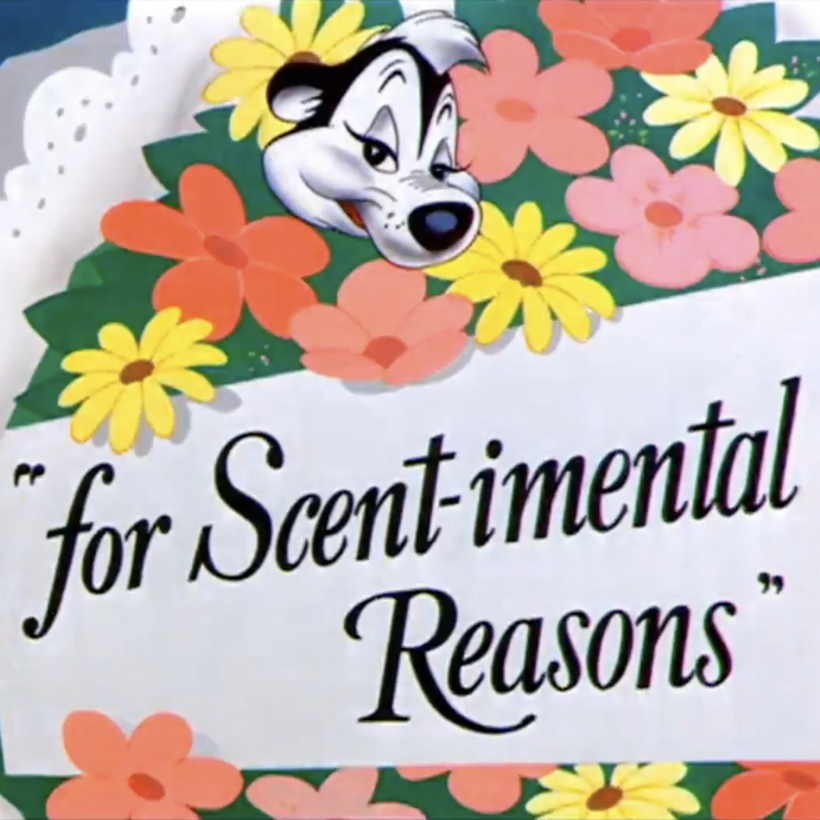In the 1950s, as television sets began filling American homes, parents quickly learned that the devices could be used to babysit their children—a welcome, if questionable, leap forward in the evolution of parenting. Sticking your kids in front of the TV was particularly popular on Saturday mornings, giving tired adults a break after their long workweeks (or providing the kids with a distraction so Mom and Dad could sneak off to the bedroom and make more kids, this being the baby boom).
Television programmers, desperate to fill what was considered a lackluster time slot, took note of the younger audiences and sought to find suitable material for them. Cartoons proved popular and, as luck would have it, were easily licensed from movie studios that otherwise had little use for these decades-old films that sat collecting dust in their vaults.

It seemed like a win-win for everyone, but there was just one problem: few of those old cartoons had actually been made for children. The “classics” of yesteryear—including the cartoons made by Walt Disney, Warner Bros., MGM, and the Fleischer brothers—were intended to be watched by adults in dark theaters, and freely trafficked in material that offended the staid sensibilities of television and its advertisers. Thus, before hitting the small screen, many cartoons were edited and censored.
The watering down continued as animators started making cartoons specifically for the new television format, leaning into characters and themes that helped sell sugary breakfast cereals to hungry kids.
Almost overnight, cartoons morphed into something very different from what they had started as. The first 50 years of animation had been full of wild inventiveness, vanguard artistry, and sly social commentary with a raconteur’s spirit. After television, an outsize portion of cartoon programming became shoddily produced treacle, reaching its lowest point in the 1970s and 1980s. In recent decades, animation has re-discovered aspects of its older sensibility—The Simpsons, South Park, BoJack Horseman—but, in the popular mind, its reputation hasn’t quite recovered.

Animation’s early decades are quickly moving beyond living memory, making it easy to forget what used to define the art form: artistic experimentation, boundary-pushing humor, and a cultural relevancy that few of today’s cartoons achieve. Some aspects of old cartoons struggle to pass muster by today’s standards, especially in terms of race or gender issues, but most of them contain moments of such inspired poetry and insight that they demand to be remembered notwithstanding their flaws. They are our culture at its most authentic, at once beautiful and ugly, sad and funny; this is art that becomes essential because it’s messy, not despite its messiness.
Below are 10 clips offering a glimpse into animation’s early, most rambunctious decades.
“Fantasmagorie” (1908)
In one of the earliest known cartoons, the luxuriously mustachioed French artist Émile Cohl created a surreal dreamscape that calls to mind a trippy circus experienced under the influence of hallucinogenic drugs. Cohl was part of the Incoherents, an irreverent art movement of the late 19th century, and his edgy sensibility demonstrated the wild possibilities open to the nascent art form. He worked as an animator in Fort Lee, New Jersey, during the early days of the movie industry, but a studio fire in 1914 destroyed much of his work and legacy.

“The Sinking of the Lusitania” (1918)
Arguably the “patron saint” of animation, the newspaper cartoonist Winsor McCay (creator of “Little Nemo in Slumberland”) inspired many of the art form’s earliest greats, including Walt Disney, to start their own careers. McCay hoped that animation would one day rival painting and sculpture as a high art form, and perhaps even replace them in the world’s most prestigious galleries and museums. Most of his work was whimsical, but he created the brooding and impressionistic “The Sinking of the Lusitania” to help people remember—and hopefully prevent—the kind of tragedies that lead to war.
“Felix in Hollywood” (1923)
Hollywood had barely existed before animators, who were mostly based in New York, decided to spoof it. Here, the director Otto Messmer demonstrates the wit and personality that helped turn Felix the Cat into one of the first cartoon superstars, a Jazz Age icon, and one of the most recognizable film personalities in the world. “If Michelangelo were now alive,” George Bernard Shaw wrote, “I have not the slightest doubt that he would have his letter box filled with proposals from the great film firms to concentrate his powers to the delineation of Felix the Cat instead of the Sistine Chapel.”

“The Skeleton Dance” (1929)
After years spent as a struggling animator during the silent-film era, Walt Disney found his real success once sound was introduced to the movies. “The Skeleton Dance,” which was part of Disney’s “Silly Symphony” series, was one of his earliest masterpieces. The cartoon is moody and dark, revealing a side of Disney that isn’t as well remembered as the suit-wearing theme-park impresario.
“Bimbo’s Initiation” (1931)
A true masterwork that feels like an eerie dispatch from an era hipper than our own. The pioneering Fleischer brothers channeled a variety of mature topics—including bondage and underground cults—into a commentary about the immigrant experience in America. Confronted by the challenges of assimilating into a new culture, Bimbo the dog is asked, “Wanna be a member? Wanna be a member?,” before he and Betty Boop begin spanking each other.

“Betty Boop in Snow-White” (1933)
The Fleischers had a long-running rivalry with Walt Disney about the tonal direction of cartoons. Whereas the California-based Disney generally represented a sunnier and brighter disposition, the New York–based Fleischers trafficked in the grittier, bawdier sensibility of urban enclaves. Here, the Fleischers present their take on the classic Snow White fairy tale. It stars the zaftig Betty Boop and features the jazz musician Cab Calloway singing an eerie rendition of “St. James Infirmary Blues,” a mournful ballad about death and decay and a possible cocaine overdose. Despite all this, the cartoon somehow manages to remain funny.
“Night on Bald Mountain,” from Fantasia (1940)
Rival cartoon studios loved to lampoon each other, and there was no bigger target than Walt Disney—everyone comes for the king, as they say. The “Night on Bald Mountain” sequence is a reminder of why he attracted so much attention: because he was a master of his art form and set the standard in terms of ambition and craft. Disney hoped that Fantasia, an astronomically expensive but largely wordless classical-music-based anthology film, would change people’s conceptions of both animation and classical music.

“Hollywood Steps Out” (1941)
The Warner Bros. animators—creators of Merrie Melodies and Looney Tunes—were the entertainment industry’s apex predators of satire and caricature. In this classic from 1941, they spoofed Hollywood’s biggest stars in a way that’s still as fresh as the day it was made. Animators at other studios, including Disney, were often jealous of their rivals’ freedom and pirate-crew atmosphere. A Disney picture might be “cute and people kind of chuckle at it,” Disney storyman Leo Salkin once said, “but Warners cartoons get laughs.”
“For Scent-imental Reasons” (1949)
As America continues indulging its histrionic back-and-forth about so-called cancel culture, let’s all just relax by watching a clip from a Pepé Le Pew cartoon. “No one is going to laugh at that shit,” the (notoriously clueless) Warner Bros. producer Eddie Selzer said after watching “For Scent-imental Reasons,” which went on to win an Academy Award. Monsieur Le Pew has ignited several social-media firestorms in recent years, but his creators (even back then) clearly explained that they were using the character to lampoon his behavior, not condone it.

“Rooty Toot Toot” (1951)
After growing disgruntled with Walt Disney’s devotion to realism, a group of expats from his studio founded United Productions of America, best known for creating Mr. Magoo (a satirical attack on McCarthyism). Committed to modern design principles and lofty artistic theories, the U.P.A. animators changed the look of animation as well as its temperament. “Rooty Toot Toot” re-interprets the narrative of the American popular song “Frankie and Johnny,” about a woman who goes on trial for killing her piano-playing lover. The cartoon was released in theaters around the same time that television began making such animation obsolete.
Reid Mitenbuler is the author of Wild Minds: The Artists and Rivalries That Inspired the Golden Age of Animation


